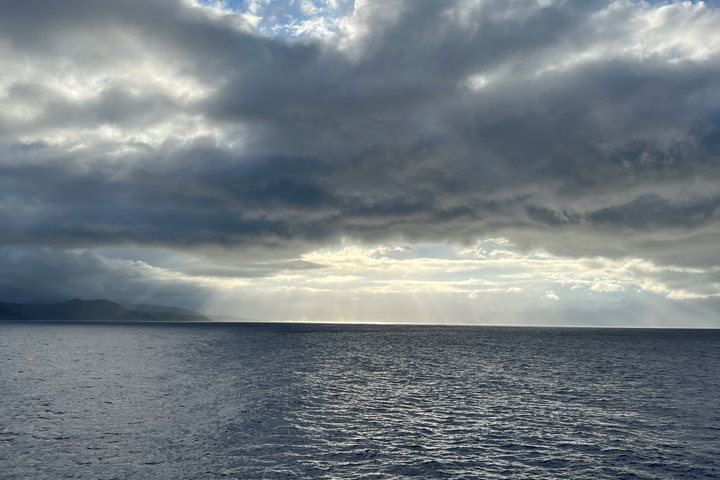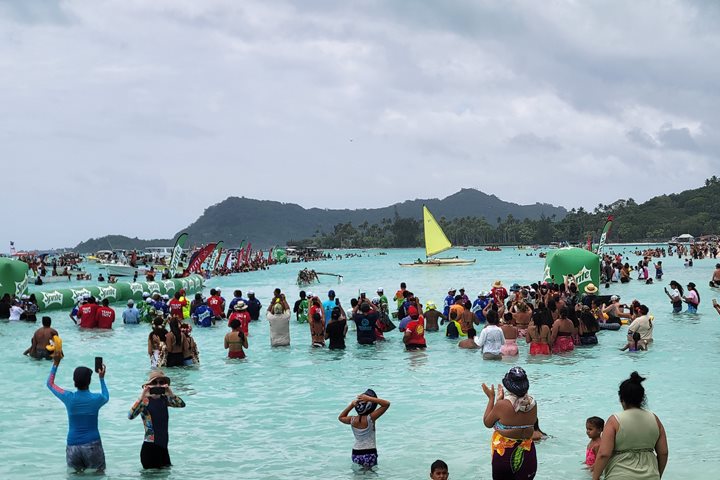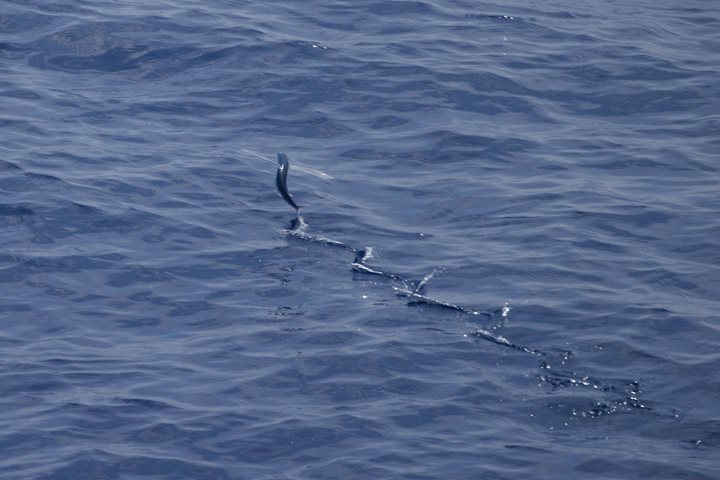Today was spectacular as we crossed the equator, an imaginary line that separates the Northern and Southern Hemispheres. We held a ceremony known as "Crossing the Line," which is a maritime tradition for individuals who have not crossed the equator. The rite is intended to signify the initiation of individuals into the realm of King Neptune, a mythical sea god. Various rituals and acts are typically done during the ceremony, with the intended goal of "Pollywogs" (sailors who haven't crossed the equator) advancing to "Shellbacks" (sailors who have). Tua Pittman played the role of King Neptune convincingly, complete with a heavy trident, accompanied by Queen Neptunia and an entourage of mermaids. King Neptune and his crew engaged in fun antics meant to induct the Pollywogs and to demonstrate the seaworthiness of everyone on board. In the end, we celebrated and received a colorful certificate to mark this momentous occasion.
Not only is the equator relevant to oceangoing individuals. It also marks the confluence of major ocean currents. This is where large ocean gyres collide. Tradewinds coming from the east push the water west, and by virtue of Earth’s rotation (i.e., the Coriolis Effect), deflect the water outward. Eventually, this causes upwelling, which brings nutrient-rich water to the surface, resulting in plankton blooms. Plankton are the subject of study for this expedition’s visiting scientists. Plankton originates from the Greek word for drifter or wanderer. These microscopic plants and animals are mostly carried by currents relative to the vast seawater surrounding them. There are endless shapes and forms of plankton. They are arguably the single most important marine creature. They constitute the primary food source of most marine life and produce around half the oxygen we breathe.
The team of visiting scientists (Adi, Jet, and Kelly) have been out sampling across different remote islands and atolls in the South Pacific to record the diversity of phytoplankton. They collect data using various tools, such as a plankton net, a low-cost flow camera (the PlanktoScope), and a Niskin bottle. So far, their water samples are showing species of plankton like dinoflagellates, diatoms, and a number of zooplankton, all of which are consistent with the expected populations of plankton normally found in the tropics. The scientists are happily working away in the Science Hub aboard National Geographic Resolution, sharing what they find with guests and naturalists alike. The ship is en route to Niue, and the visiting scientist team will have their next opportunity to collect water samples in the Cook Islands.
Daily Expedition Report written by: Andrian “Adi” Gajigan and Jun Jet Tai, Lindblad-National Geographic Visiting Scientists, and Kelly Blais, Grosvenor Fellow Alumnus







